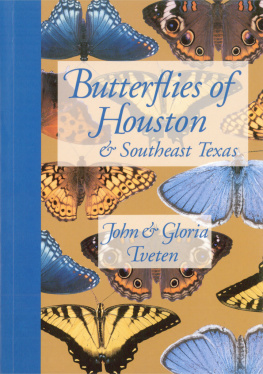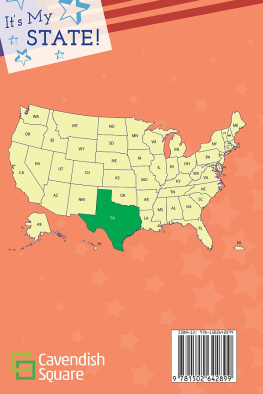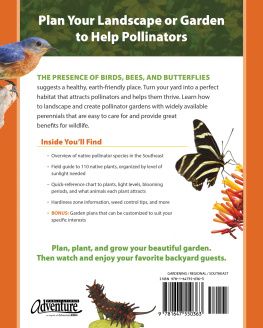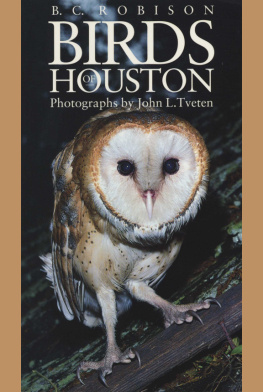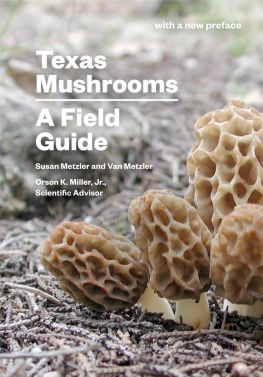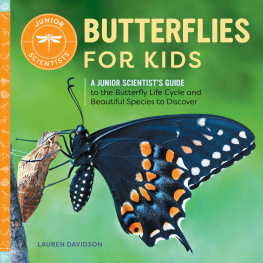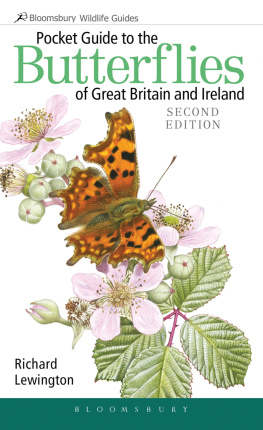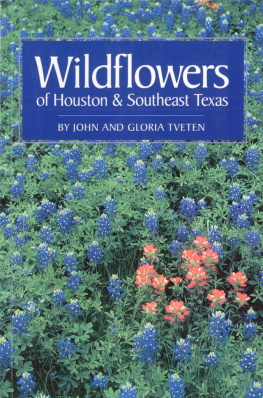John Tveten - Butterflies of Houston and Southeast Texas
Here you can read online John Tveten - Butterflies of Houston and Southeast Texas full text of the book (entire story) in english for free. Download pdf and epub, get meaning, cover and reviews about this ebook. year: 1996, publisher: University of Texas Press, genre: Home and family. Description of the work, (preface) as well as reviews are available. Best literature library LitArk.com created for fans of good reading and offers a wide selection of genres:
Romance novel
Science fiction
Adventure
Detective
Science
History
Home and family
Prose
Art
Politics
Computer
Non-fiction
Religion
Business
Children
Humor
Choose a favorite category and find really read worthwhile books. Enjoy immersion in the world of imagination, feel the emotions of the characters or learn something new for yourself, make an fascinating discovery.
- Book:Butterflies of Houston and Southeast Texas
- Author:
- Publisher:University of Texas Press
- Genre:
- Year:1996
- Rating:3 / 5
- Favourites:Add to favourites
- Your mark:
- 60
- 1
- 2
- 3
- 4
- 5
Butterflies of Houston and Southeast Texas: summary, description and annotation
We offer to read an annotation, description, summary or preface (depends on what the author of the book "Butterflies of Houston and Southeast Texas" wrote himself). If you haven't found the necessary information about the book — write in the comments, we will try to find it.
In this easy-to-use field guide, the Tvetens describe and illustrate more than 100 species of butterflies that live in Southeast Texas and can often be found across the state.
Butterflies of Houston and Southeast Texas — read online for free the complete book (whole text) full work
Below is the text of the book, divided by pages. System saving the place of the last page read, allows you to conveniently read the book "Butterflies of Houston and Southeast Texas" online for free, without having to search again every time where you left off. Put a bookmark, and you can go to the page where you finished reading at any time.
Font size:
Interval:
Bookmark:
and Southeast Texas
Corrie Herring Hooks Series
Number Thirty-two

& Southeast Texas
John & Gloria
Tveten
Photographs and Illustrations
by the Authors
 University of Texas Press
University of Texas Press
Austin
: A tiger swallowtail, Papilio glaucus, sips nectar from the blooms of wild black cherry.
Copyright 1996 by John and Gloria Tveten
All rights reserved
Printed in China
Third paperback printing, 2008
Requests for permission to reproduce material from this work should be sent to:
Permissions
University of Texas Press
P.O. Box 7819
Austin, TX 78713-7819
www.utexas.edu/utpress/about/bpermission.html
Library of Congress Cataloging-in-Publication Data
Tveten, John L.
Butterflies of Houston and southeast Texas / John and Gloria Tveten ;
photographs and illustrations by the authors 1st ed.
p. cm. (Corrie Herring Hooks series ; no. 32)
Includes bibliographical references and index.
ISBN 978-0-292-74742-5 (e-book)
ISBN 978-0-292-78688-2 (individual e-book)
1. ButterfliesTexasHouston. 2. ButterfliesTexasHoustonIdentification. 3. ButterfliesTexas. 4. ButterfliesTexasIdentification. I. Tveten, Gloria A., date. II. Tide. III. Series.
QL551.T4T945 1996
595.7890976414dc20 95-50198
To our son Michael,
who shares our interest in nature.
This project began many years ago, when a patient father indulged his young sons love of butterflies and other insects. He built display cases, provided books and equipment, and was always ready for collecting trips into the fields and forests of the Midwest. To the late Tuko Tveten we owe an enormous debt of gratitude.
With our son Michael, this interest in insects continued into a third generation. He has been a companion on many fieldtrips, a partner in countless discoveries and delights, and a source of valuable information as he continued an education in entomology. It is to him that we dedicate this book.
Many other butterfly enthusiasts have contributed greatly to our work. Roger Peace accompanied us on several photographic trips in Southeast Texas and shared the excitement of rearing adult butterflies from their larvae. We thank Geyata Ajilvsgi, Charles Bordelon, Dale Clark, and Hoe Hin Chuah for sharing their extensive knowledge of local butterflies and for suggesting locations for particular species. Don Olhausen, Martha Henschen, Randy Beavers, and Valerie Karime provided both butterfly larvae and plants for study, while botanists Charles Peterson and Larry Brown offered assistance in identifying larval food plants.
We thank Raymond Neck for several discussions on butterfly taxonomy and nomenclature and Steve Williams and Richard Orr for copies of their checklists for the Houston area. Mike Rickard contributed his personal butterfly list and the benefit of his years of experience in Southeast Texas. He also read the completed manuscript and offered many helpful suggestions for improvements. His extensive knowledge and contributions have been invaluable.
James Smith provided information on butterfly distributions in Brazoria County and helped us locate several species that occur less frequently in the immediate Houston area. He also read the manuscript and offered us the benefit of his wide field experience.
Nancy Greig, too, provided useful comments and suggestions for the improvement of the initial manuscript.
We thank those who provided photographs to supplement our own: Geyata Ajilvsgi (amymone), Carlos Hernandez (zebra), George Krizek (Cassius blue and twin-spot skipper), and Michael Tveten (great purple hairstreak).
Finally, we owe an enormous debt of gratitude to the University of Texas Press for their faith in this project.
Butterflies of Houston
and Southeast Texas

A great southern white, Ascia monuste., completes its entire life cycle in a patch of saltwort along the Texas coast near Freeport.
The study of butterflies has long been the province of the professional or serious amateur collector. The insects are captured and carefully mounted, their wings spread for display. Identification then becomes a matter of systematic comparison with photographic or painted illustrations depicting all the species of a given region. Specialists even dissect the bodies of certain species to verify by microscopic examination their identities, allowing, at the same time, a careful study of taxonomic relationships. There are numerous manuals and field guides available for the serious butterfly collector. Some depict representative butterflies from around the world; others treat the species of North America, the eastern or western states, or even a specific state or region. Many of these sources are listed in the bibliography.
Recently, however, there has been a dramatic turn toward butterfly watching as a rewarding outdoor pastime, much like the way the popularity of bird watching is sweeping the country. The butterflies are observed in their natural habitats, appreciated for their gemlike beauty and lilting flight, and then allowed to continue on their way. Hikers and campers, gardeners, birders and wildflower enthusiasts, nature photographersall are discovering that butterflies can add enjoyment to their pursuits. Most people will want to identify the species they see, to put a name on their new discoveries and learn more about the habits of these fascinating insects. That is the purpose of this book.
Identification, of course, can be difficult in the field. Some butterflies do not allow a close approach, or they might fly before distinctive features can be seen. Some diagnostic field marks are visible only at close range or when the wings are widely spread, as with mounted specimens. Many butterflies sit with wings tightly closed, failing to reveal the upperwing patterns usually portrayed in field guides intended for collectors. Here, however, we show live butterflies in their natural positions, sometimes with wings spread widely, often with them closed above their backs. In many cases, the underwing pattern is most diagnostic, particularly within the confusing array of small blues, hairstreaks, and skippers. Not every butterfly can be identified conclusively in the field, but with patience the careful observer can soon learn the species of the area.
We have designed this book specifically for Houston, Texas. All of the common butterfly species are described and illustrated, as well as most of those that occur less frequently. It is not possible to include every individual that might stray into the region on rare occasions, for vagrant or wind-blown butterflies sometimes turn up far from their normal range. Texas has repeatedly been termed a biological crossroads, and we see influences from all directions, including tropical butterflies that range across the Rio Grande from Mexico and sometimes wander farther north. Most of the butterflies seen in Houston and the surrounding Southeast Texas area, however, will be found on the pages of this book.
We have an advantage in treating a limited area. Many of the problems in butterfly identification stem from the large number of similar species that occur in varied habitats across the country. Scores of confusing crescents and checkerspots, hairstreaks, or skippers confront the beginning butterfly enthusiast from the pages of the standard field guides. In most cases, only a few inhabit any given region, and the choices in a local book are limited and less intimidating.
Font size:
Interval:
Bookmark:
Similar books «Butterflies of Houston and Southeast Texas»
Look at similar books to Butterflies of Houston and Southeast Texas. We have selected literature similar in name and meaning in the hope of providing readers with more options to find new, interesting, not yet read works.
Discussion, reviews of the book Butterflies of Houston and Southeast Texas and just readers' own opinions. Leave your comments, write what you think about the work, its meaning or the main characters. Specify what exactly you liked and what you didn't like, and why you think so.

